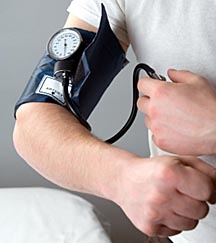PPH is a disease that causes a narrowing of the lungs' blood vessels which leads to high blood pressure in those vessels and eventually to heart failure. It is different from Secondary Pulmonary Hypertension (SPH) because SPH is the result of another disorder, typically lung disease, abnormal breathing processes or heart disease. In patients with PPH there is no apparent cause for the restricting of the blood vessels of the lungs, (which is why it is also referred to as unexplained pulmonary hypertension) although it has been linked to Fen-Phen.
 Fen-Phen has been linked to an onset of PPH especially in people who took the diet drug for more than three months. PPH can develop ten years or more after patients stop taking diet drugs, so anyone who took Fen-Phen just before it was removed from the market is still at risk of developing the disease.
Fen-Phen has been linked to an onset of PPH especially in people who took the diet drug for more than three months. PPH can develop ten years or more after patients stop taking diet drugs, so anyone who took Fen-Phen just before it was removed from the market is still at risk of developing the disease.PPH is most common in women between the ages of 21 to 40; however anyone at any age can develop it. This includes newborn babies, who are at a higher risk of developing Primary Pulmonary Hypertension of the Newborn (PPHN) if their mothers have taken Selective Serotonin Reuptake Inhibitors while pregnant.
Symptoms of PPH are often minor to start out with and are often attributed to some other physical condition, such as being out of shape or asthma. PPH symptoms include fatigue, shortness of breath after exertion, dizziness, swelling of ankles, blue tinge to lips and skin, chest pain, fainting, and weakness. PPH is a condition of exclusion, meaning that all other causes of the pulmonary hypertension must be ruled out before PPH can be diagnosed. This often requires various tests.
READ MORE LEGAL NEWS
PPH is not reversible, but symptoms can be relieved with drugs. Some patients require lung or heart-lung transplants. Recently, a 21-year-old mother in Canada required a heart-lung transplant after her PPH condition deteriorated to the point that her life was in jeopardy. Her condition was so severe that the hospital put her on a fake lung for two days while waiting for a donor lung. While she was on the operating table her heart failed as well, necessitating a heart transplant. According to an article in the Toronto Star around 20 percent of people with PPH die waiting for lung transplants, making this young woman extremely lucky. She was the first person in North America to have the fake lung used while she waited for transplant lungs to become available.
